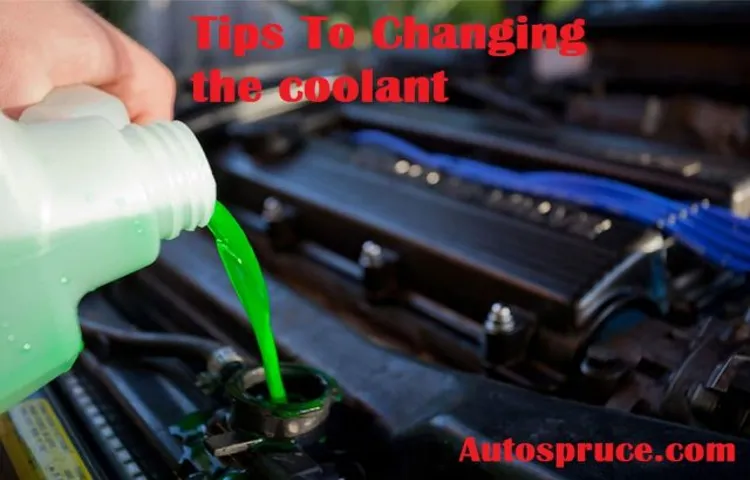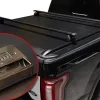Are you worried about your vehicle overheating or your engine not functioning properly? One of the reasons could be low coolant. Coolant is the most important liquid in your car’s cooling system, as it helps maintain the engine’s temperature. When your coolant level is low, it can cause serious damage to your engine and even lead to expensive repairs.
So, how do you check if your coolant is low? It’s a quick and easy process that you can do yourself. In this blog post, we’ll walk you through the steps to check your coolant level and ensure that your vehicle is running smoothly.
Table of Contents
Visual Inspection
If you suspect that your coolant is low, a visual inspection is the best place to start. Pop open the hood of your vehicle and look for the coolant reservoir. It’s typically a plastic container with a cap that’s marked with “coolant” or “engine coolant.
” If the coolant level is between the “minimum” and “maximum” marks, your vehicle’s coolant level is okay. However, if the coolant level is below the “minimum,” it’s time to add more coolant. Just be sure to check for any leaks in the system before adding more coolant, as low coolant levels are often a sign of a more significant issue.
If you do need to add more coolant, use the same type and brand that’s already in your vehicle and add it to the reservoir, being careful not to overfill. By performing regular visual inspections, you can catch low coolant levels before they cause any major damage to your engine.
Check Coolant Reservoir
If you want to keep your engine running smoothly, it’s important to regularly check the coolant reservoir. This simple task can save you from major headaches down the road. To start, pop open the hood of your car and locate the coolant reservoir.
Look for any signs of cracks, leaks, or damage. If you spot any, it’s time to replace the reservoir or seek the help of a mechanic. Next, check the coolant level.
Is it at the proper level designated by the manufacturer? If not, add more coolant until it reaches the fill line. Don’t forget to use the recommended coolant type. Checking the coolant reservoir only takes a few minutes, but it can be the difference between a smoothly operating engine and a costly breakdown.
So, don’t neglect this critical component of your vehicle maintenance routine.
Check Radiator
Checking your car’s radiator is an essential part of vehicle maintenance. A visual inspection is the first step in checking the health of your radiator. It’s best to do this when the engine is cold to avoid any accidental burns.
Look at the exterior of the radiator for any signs of damage or corrosion. Check the fins for any debris buildup, such as leaves or bugs, that could affect airflow. Inspect the hoses for any cracks or leaks.
Pay close attention to the radiator cap too, as it can cause leaks if it’s not tight enough. It’s a good idea to check the radiator fluid level as well to ensure there’s enough coolant. Regularly checking your car’s radiator can prevent bigger problems down the line, such as overheating and engine damage.
Remember, prevention is always better than cure, so taking a few minutes to visually inspect your radiator can save you time and money in the long run.
Using a Coolant Tester
Are you worried that your coolant may be running low? One way to check is by using a coolant tester. This nifty device measures the level of coolant in your vehicle and helps to determine if it’s time for a refill. To use a coolant tester, start by opening the hood of your car and locating the coolant reservoir.
Remove the cap and dip the tester into the coolant, making sure that it is completely submerged. After a few seconds, remove the tester and read the level indicated on the scale. If the level is low, it’s time to add more coolant to your car.
By using a coolant tester, you can stay on top of your car’s engine health and prevent any potential issues that may arise from low coolant levels. So, make sure to test your coolant regularly to ensure optimal performance and longevity of your vehicle.
Testing the Coolant
Testing the coolant in your car’s engine is a crucial part of maintaining its overall health. And the easiest way to test the quality of your coolant is by using a coolant tester. This handy tool can quickly and accurately measure the pH levels and boiling point of your coolant, which are both indicators of its effectiveness.
You simply need to insert the tester into the coolant and squeeze the bulb to draw in the liquid. Then, you can read the results on the gauge. Typically, the ideal pH range for coolant is around
5 to 11, and the boiling point should be at least 212 degrees Fahrenheit. If your coolant falls outside of these ranges, it may need to be changed or flushed out. Regularly checking your coolant can prevent engine overheating and costly repairs down the line.
So, make sure to invest in a coolant tester to keep your car running smoothly.
Interpreting the Results
If you’re wondering how to interpret the results of your coolant test, don’t worry, it’s easier than you might think. Using a coolant tester is a simple and effective way to determine the health of your engine’s coolant. To start, ensure that your engine has cooled completely before testing.
Next, locate the coolant reservoir and use the tester to draw a small amount of fluid from it. Once you have a readout of the results, you can determine if your coolant is still effective or if it needs to be changed. If the results show that the coolant is low on protection, it’s time to replace it.
Don’t forget to check for any leaks or other signs of issues with your cooling system. By regularly testing and interpreting your coolant’s results, you can maintain the health of your engine and prevent costly repairs down the road.
Adding Coolant
Adding coolant to your car can be a daunting task if you’ve never done it before. However, with the help of a coolant tester, you can ensure that you add just the right amount of coolant to your car’s engine. A coolant tester is a simple tool that measures the concentration of the coolant in your car’s engine.
To use it, simply remove the radiator cap and dip the tester into the coolant. The tester will provide you with a reading that tells you the strength of the coolant. If the reading is too low, you’ll need to add more coolant to the engine.
Doing so will help keep your car’s engine cool, which is important for prolonging its lifespan. Overall, using a coolant tester is an easy and effective way to ensure that your car’s engine gets the right amount of coolant.
When to Have Your Coolant Checked by a Professional
As a responsible car owner, it’s important to know when to have your coolant checked by a professional. One major sign that your coolant is running low is if your engine is overheating. When your engine becomes too hot, it can cause severe damage to your car and even lead to complete engine failure if left unchecked.
You may also notice that your heater is not working correctly or that the temperature gauge is giving you erratic readings. If these issues arise, it’s important to have your coolant checked as soon as possible to avoid any further damage. It’s recommended to have your coolant checked during routine maintenance services, such as oil changes or tire rotations, to ensure that your car is in top condition.
Don’t neglect your coolant levels, as it’s essential in keeping your engine running smoothly. So, if you’re ever unsure about the state of your coolant, don’t hesitate to have a professional take a look.
Routine Maintenance
Routine maintenance is essential to keep your vehicle functioning correctly. One vital aspect of it is checking your coolant level regularly. Coolant is responsible for keeping your engine from overheating, and if the level is low, it can cause severe damage to your engine.
A professional mechanic should check the coolant level in your vehicle at least once a year during routine maintenance check-ups. However, suppose you notice any signs of leakage or low coolant levels. In that case, it’s essential to schedule an inspection with a professional to prevent any further damage to your engine.
Neglecting your coolant inspection can lead to costly repairs or engine replacement in severe cases, so it’s always better to be safe than sorry.
Strange Engine Behavior
As a car owner, it’s important to keep an eye on your engine’s behavior. An engine can act strangely for many reasons, but one of the most common culprits is low coolant levels. Coolant helps regulate your engine’s temperature, and if it’s too low, your engine can overheat or experience other issues.
That’s why it’s a good idea to have your coolant checked by a professional on occasion. They can test the coolant’s effectiveness and ensure there are no leaks in your system. It’s especially important to get your coolant checked before extreme weather conditions, such as hot summers or harsh winters.
Trust me, it’s always better to be proactive and prevent engine issues from occurring than waiting until an expensive repair is needed. So, for peace of mind and smooth rides, make sure to have your coolant professionally checked.
Conclusion
You know your coolant is low when your car starts to feel like a diva with a fever- overheating, complaining, and demanding attention. Don’t ignore the warning signs, though. Keep an eye on your coolant levels and make sure they’re always at the appropriate level to avoid any roadside drama.
Otherwise, you might find yourself stuck on the side of the road with a hot and bothered car, desperately wishing you had paid more attention to your coolant. So, keep your car cool, calm, and collected by keeping an eye on your coolant levels!”
FAQs
What are some signs that indicate low coolant levels?
Some signs of low coolant levels include the engine overheating, a warning light on the dashboard, steam coming from under the hood, and low or no heat from the car’s heater.
Can low coolant levels cause damage to the engine?
Yes, running the engine with low coolant levels can cause overheating and damage to the engine’s components, such as the cylinder head gasket and pistons.
How often should I check my coolant levels?
It’s recommended to check your coolant levels at least once a month, or as often as your car manufacturer recommends in the owner’s manual.
How do I check my coolant levels?
To check your coolant levels, make sure the engine is cool, locate the coolant reservoir tank, and visually inspect the level of the coolant. The level should be between the “min” and “max” marks on the tank.
Can I add water instead of coolant if it’s low?
In an emergency situation, you can add water to the coolant system if the coolant is low. However, it’s recommended to use a coolant and water mixture for optimal engine performance and protection.
How do I properly dispose of old coolant?
Old coolant should be disposed of at a local recycling center or the nearest hazardous waste facility. Do not pour old coolant down the drain or into the ground.
How much coolant should I add if it’s low?
Check your car’s owner’s manual for the recommended amount of coolant to add when the levels are low. Generally, the amount needed will be between one to two gallons.



